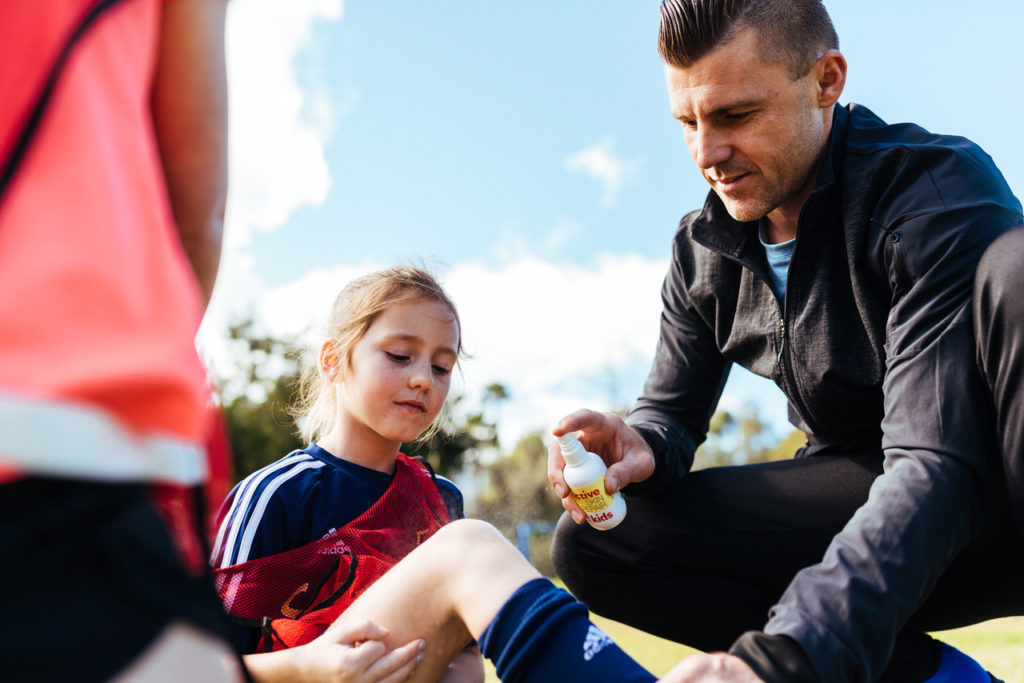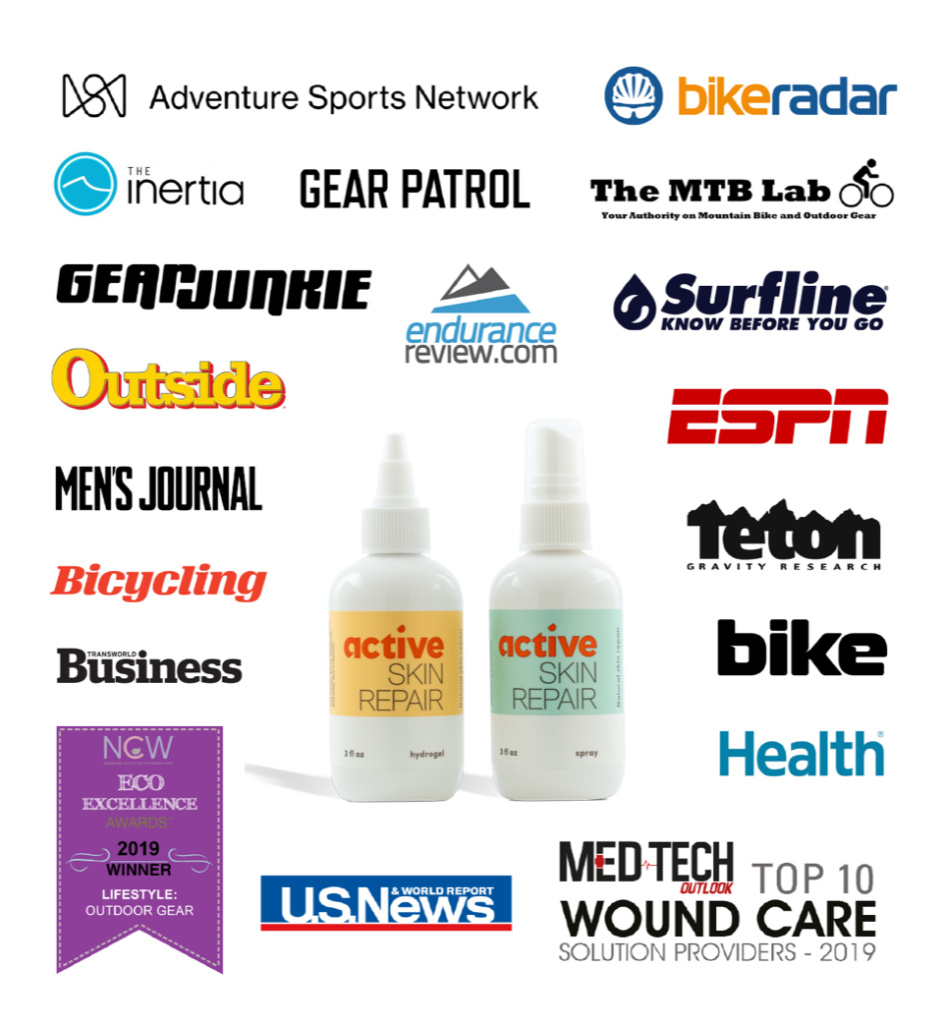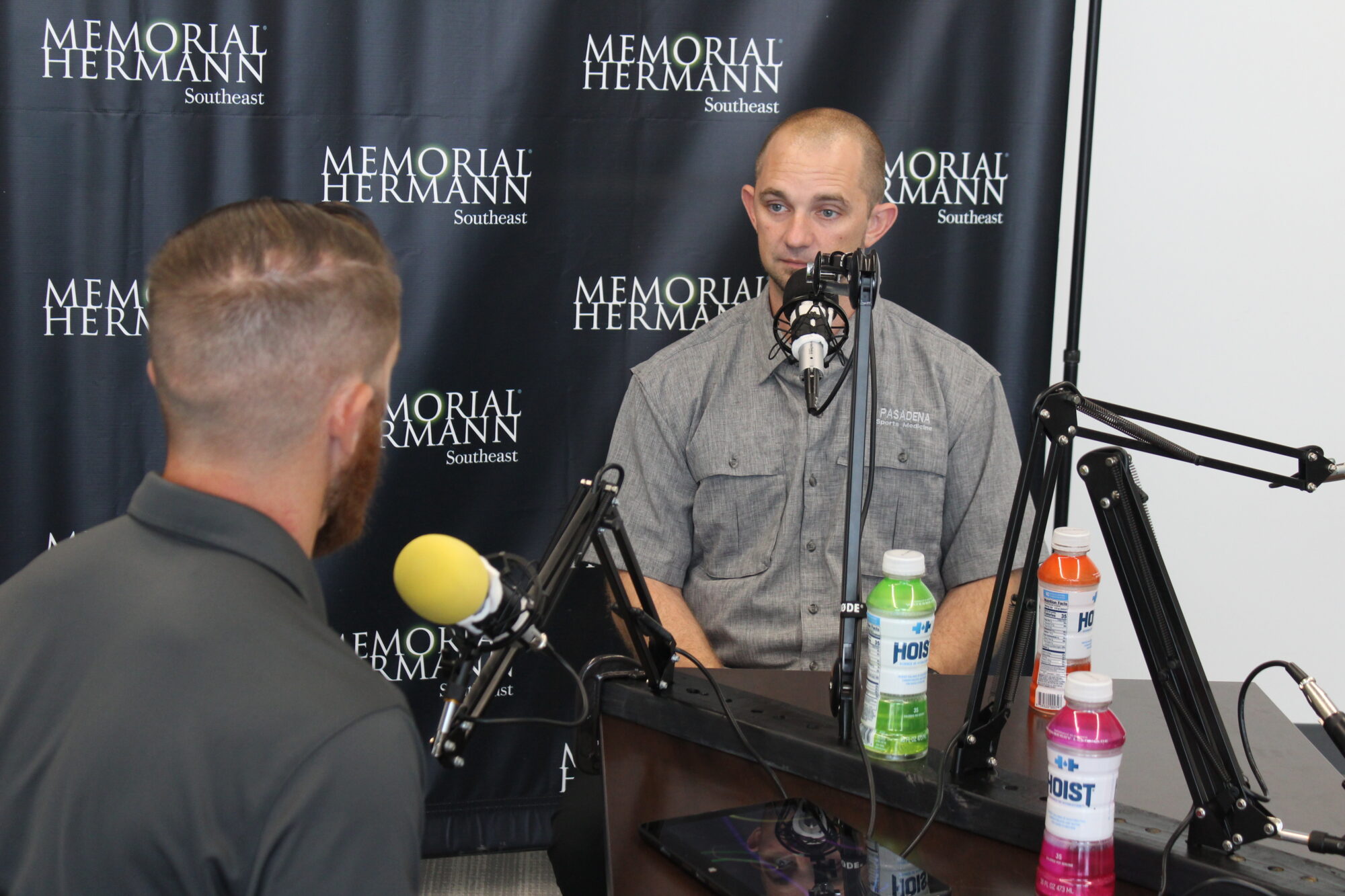Podcast: Play in new window | Download
We all want Active Skin Repair for our cuts
What is the best practice for using topicals and Wound Care?
The NATA position statement on wound care is that soap and water are equally effective as other more expensive and less readily available options for wound cleansing.
When we are on the field flushing with soap and water might not be the best option…because honestly, I do not want the bloody elbow close to my water bottle or water nozzle.
We all know that one athlete that might keep their wound back and not contaminate the rest of our water…but that one is generally the exception.

What is wound care best practice?
- Clean the wound
- Clean the area around the wound
- Use an active wound healing agent like Hypochlorous acid
- This is the active ingredient in Active Skin Repair
- Cover with an occlusive dressing
- Change the dressing and reapply the stabilized hypochlorous acid daily
- visually inspect the wound and surrounding area during changing of bandage
- Continue until wound is completely closed
Want to hear a strange Wound Care story?
Molly Quigley shared with us that she used the lining of an eggshell to help seal a wound.
Obviously we needed details:
Okay, so I had an athlete bite his lip during a basketball warm-up and we tried everything to get the bleeding to stop but after a whole quarter, the ref kept sending him out. I had run out of ideas but remembered reading a story about how the lining of an egg, specifically the little gross white lining you can see when you crack a raw egg, and how it can help to seal/clot a wound. We were desperate so I stole an egg from culinary and cleaned it really well! I got a tiny piece of the lining and put it over the wound. We gave it about a minute to dry and it actually formed an almost dry layer of skin that totally stopped the bleeding! He pulled it off after the game and it was fine, could barely see a mark and left it clean!
– Molly Quigley from facebook
Are we overusing triple antibiotics?
Jason Carruth and Morgan Rakestraw reported that neomycin, 1 antibiotic in triple antibiotic was recently shown to reduce granulation and delay healing. Also, up to 25 % of people have an allergic reaction to it. Instead, use vaseline and maybe polybiotic if the wound is angry
What holistic approaches to wound care?
*****use caution as some of these are unregulated in manufacturing*****
Daniel Young shares from his own experiences:
- Burns – lavender oil is magic
- Cuts/abrasions/general wounds – tea tree oil layered with lavender oil does wonders.
- I'll encourage kids/parents to try it. These oils fairly cheap and we buy them at Wal-Mart/HEB/Target. But, we do not use it at the HS.
PLEASE DO NOT…
Use Alcohol on an open wound. Alcohol is great for killing living things, but it does not filter through what it kills. Alcohol will kill the good cells as well as any possible bacteria.
Use caution with peroxide as it is a less cytotoxic solution, but it still kills healthy cells.
Hydrogen peroxide is a great way to get the dirt out of a cut that can not be washed out with soap and water.
More about Active Skin Repair

HOCI is a naturally occurring molecule that is produced by our bodies’ white blood cells as a way to promote healing. The re-creation of this molecule results in a clinically proven regenerative technology that helps support the body’s natural healing process.
Hypochlorous acid or HOCL is the active ingredient in Active Skin Repair
Active Skin Repair does not use synthetic antibiotics, is not petroleum-based, does not cause allergic reactions and does not lead to antibiotic resistance.
Contact Us
Try some Active Skin Repair on your next round of wound care
Email Justin and ask for a Sports Medicine Broadcast sample package.
Or subscribe to Adam Larsen's Athletic Training Box and use the coupon code “sportmedicinebroadcast” as it will be in the next shipment.
